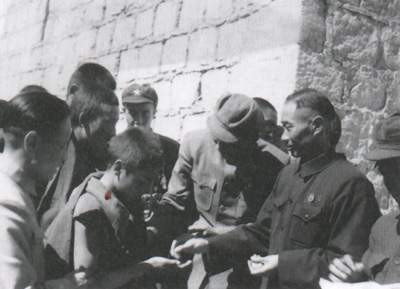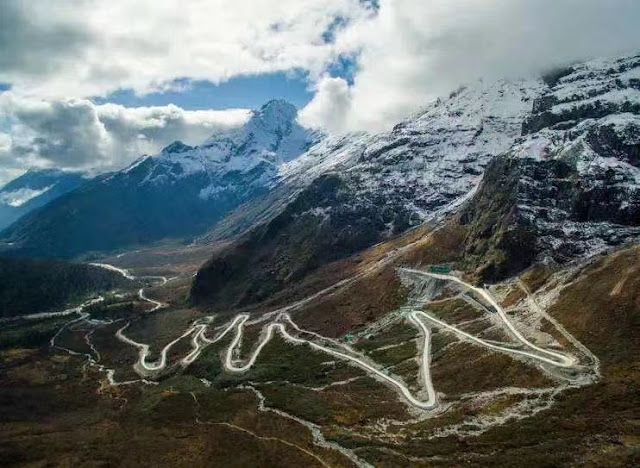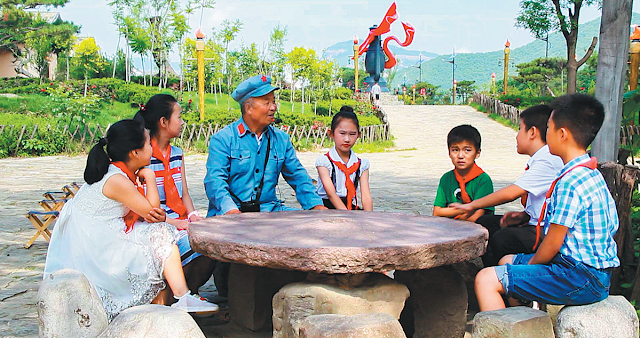My article Tibet's so-called Peaceful Liberation appeared in The Daily Guardian.
Here is the link...
As China plans to celebrate the 70th anniversary of the 17-Point Agreement, it is important to remember that the violence and subjugation Tibet has witnessed since 1950 cannot be termed as a ‘peaceful liberation’ of the region.
The history of Mao's China is a tale of well-planned and well-executed moves. All the events from 1949 onwards have unfolded in a perfectly calculated sequence: first, the invasion of Tibet in 1950; after a vague protest by the Indian Government and the adjournment of the Tibetan Appeal to the UN (at Delhi's instance), in 1951, the 17-Point ‘Agreement’ was signed. Then, in 1954, the ‘Panchsheel’ accord (which neutralized India under the Hindi-Chini Bhai-Bhai bluff) was inked and soon after the first incursions started on Indian soil. It was followed by the crushing of the Tibetan uprising in 1959, and finally in October 1962, the ‘teaching of a lesson’ to India for daring to give asylum to the Dalai Lama and his followers in March 1959.
This should not be forgotten at a time China plans to celebrate the 70th anniversary of the “Agreement between the Central People's Government and the Local Government of Tibet on Measures for the Peaceful Liberation of Tibet”, also known as the 17-Point Agreement. The paramount question remains: has Tibet really been liberated?
Here too, Mao executed a meticulously planned two-pronged operation; the first part culminated in the Battle of Chamdo which saw the Tibetan forces being decimated; the Great Helmsman’s second step was ‘diplomatic’, the weak Tibetan State was forced to put its thumbprint on an agreement allowing Communist China to take over the Land of Snows.
In May 1951, the Tibetan delegates had no alternative but to accept that the “the Tibetan people shall return to the family of the Motherland of the People's Republic of China” and “drive out imperialist aggressive forces from Tibet.” (Article I)
Ngabo Ngawang Jigme, the former governor of Kham province at that time a prisoner of war, was nominated by the Communists as ‘head of the Tibetan delegation’; with his colleagues, Ngabo had to agree that “the local government of Tibet shall actively assist the People's Liberation Army (PLA) to enter Tibet and consolidate the national defenses.” (Article II)
One can ask: against who was this ‘defence consolidation’?
Very few realized then that it could only be against India; though the Indian officials posted on the Roof of the World would soon discover the true objectives of the Communists, nobody was ready to listen in Delhi.
This period coincided with the beginning of the Hindi-Chini-Bhai-Bhai, the honeymoon between Delhi and Beijing.
Several years ago, the Central Tibetan Administration claimed that the number of Tibetans who died of starvation, violence, or other indirect causes due to the invasion was approximately 1.2 million. Though this figure could not be confirmed, the Chinese occupation was far from ‘peaceful’.
Over the years, the age-old Indo-Tibet relations were gradually replaced by a cruder relation with the new occupiers of Tibet; the Indian kinship with Tibet progressively disappeared with the presence of the ‘Liberation Army’ (PLA) the plateau. This was witnessed with dismay by the Indian diplomats and officials posted in the Land of Snows till the 1962 War.
At the beginning, very few Tibetans had the courage to fight the ineluctable; most, whether from the aristocracy or the clergy, first collaborated with the occupying forces, but these years also witnessed the birth of a national conscience and a ‘people’s movement’, which unfortunately never got Delhi’s support.
Soon after the signature of the 17-Point Agreement, the arrival of the Chinese troops in Lhasa brought a famine in Lhasa. Delhi came to the rescue and fed rice the PLA for a couple of years via Sikkim.
The first and foremost consequence of the signature of the 17-Point Agreement was that the Land of Snows lost its sovereignty; Tibet had become a part of the ‘Great Motherland’. It was the first time in its 2,000 year-old history, that Tibet consented to be a province ‘within the boundaries’ of China in an official document.
The Tibetans were put in front of a fait accompli and the Government of India did react to the ‘Agreement’, even though some clauses were in clear contradiction with several articles of the 1914 Simla Convention, binding between India and Tibet.
Three weeks after the Agreement was inked, during a press conference, Nehru pretended that he was unaware: “I do not know much more about it than you probably know. The story about an agreement being reached between the People's Government in China and the Tibetan authorities has reached us too. That is all; no further development has taken place to our knowledge. It is not proper for me to react to something which is not complete, which is not fully known.”
Washing his hands of the tragedy, the Prime Minister remained extremely vague when asked about the status of Tibet: “Throughout this period some kind of Chinese suzerainty has been recognised in the past as well as Tibetan autonomy. We have certain interests there which are not political but which are cultural, etc, which we should like to preserve. These are our approaches and we should like to preserve our cultural and trade interests in a friendly way with the people concerned.”
The Chinese propaganda said that the Dalai Lama welcomed the Agreement, he would have sent a telegram to Mao: "the local government of Tibet as well as the Tibetan monks and laymen unanimously support this agreement, and will actively assist the PLA in Tibet to consolidate national defense, drive imperialist forces out of Tibet and safeguard the unification of the territory and the sovereignty of the motherland." The 16-year old probably never did.
Some 15 years ago, in an interview, the Tibetan leader told us: “when the Tibetan delegation was negotiating in Beijing they were reluctant to sign, but the Chinese told them clearly: ‘If you do not sign, it is very easy for us, we just have to give a signal to the army and the army will march into Tibet.’" The Tibetan leader concluded: “It is clear, there were only two choices: either to accept the agreement or to go through what they called a military 'liberation'. For some years, we derived some benefit, but later, it became plain military occupation.”
Today China has started the most wide-apread campaign since the Cultural Revolution, to teach the glorious history of the Communist Party to the Chinese people. The propaganda says: “hostile forces at home and abroad make use of the history of the Chinese revolution and the history of the new China, doing their utmost to attack, vilify and smear them, with the fundamental aim of inciting the over throw of the leadership of the Communist Party of China and our socialist system.”
But history can’t be changed. The Tibetans were not ‘peacefully liberated’ in 1951.











































